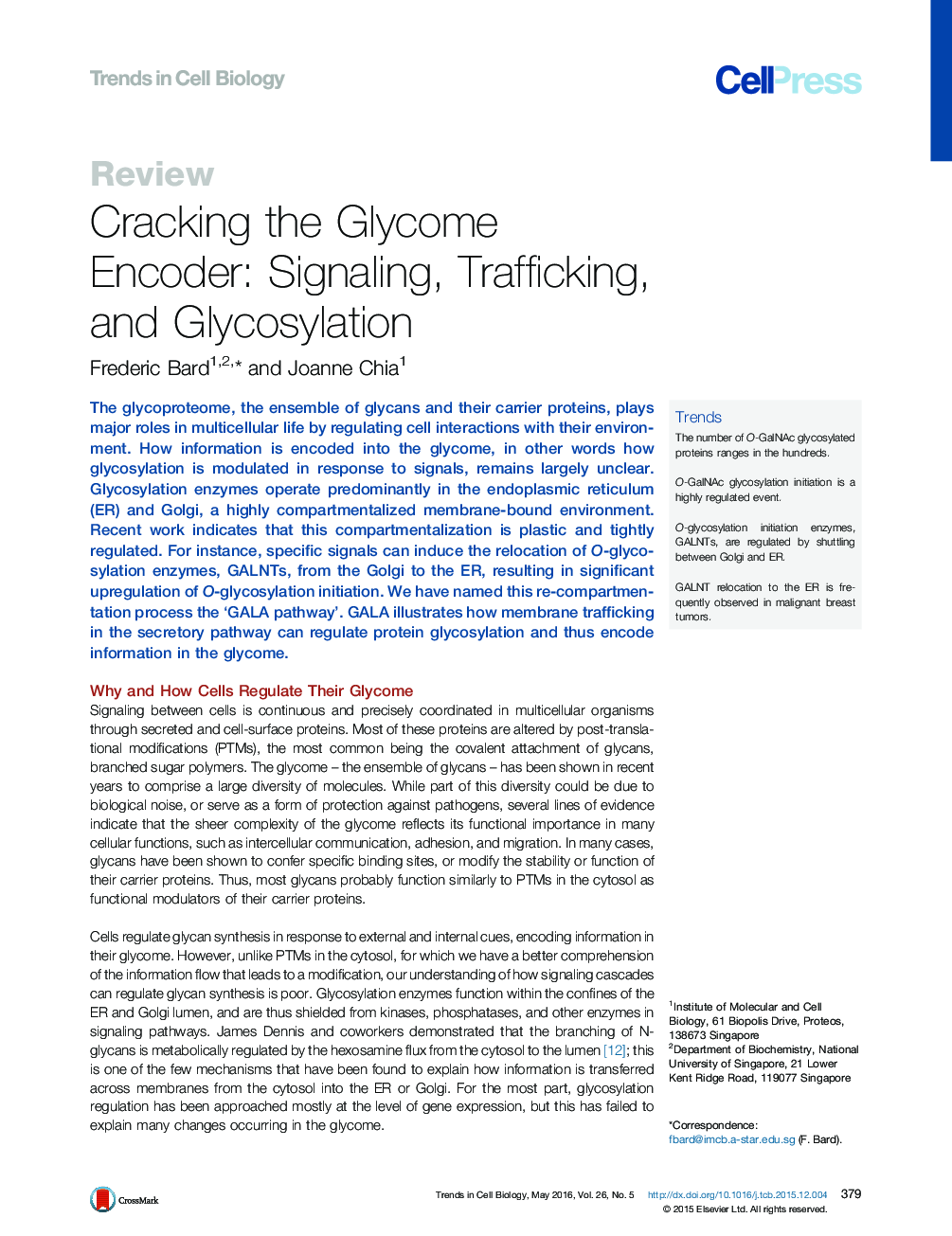| Article ID | Journal | Published Year | Pages | File Type |
|---|---|---|---|---|
| 2204246 | Trends in Cell Biology | 2016 | 10 Pages |
The glycoproteome, the ensemble of glycans and their carrier proteins, plays major roles in multicellular life by regulating cell interactions with their environment. How information is encoded into the glycome, in other words how glycosylation is modulated in response to signals, remains largely unclear. Glycosylation enzymes operate predominantly in the endoplasmic reticulum (ER) and Golgi, a highly compartmentalized membrane-bound environment. Recent work indicates that this compartmentalization is plastic and tightly regulated. For instance, specific signals can induce the relocation of O-glycosylation enzymes, GALNTs, from the Golgi to the ER, resulting in significant upregulation of O-glycosylation initiation. We have named this re-compartmentation process the ‘GALA pathway’. GALA illustrates how membrane trafficking in the secretory pathway can regulate protein glycosylation and thus encode information in the glycome.
TrendsThe number of O-GalNAc glycosylated proteins ranges in the hundreds.O-GalNAc glycosylation initiation is a highly regulated event.O-glycosylation initiation enzymes, GALNTs, are regulated by shuttling between Golgi and ER.GALNT relocation to the ER is frequently observed in malignant breast tumors.
